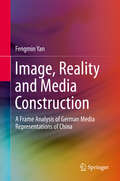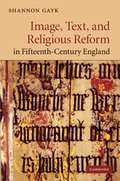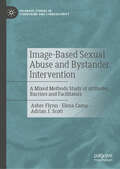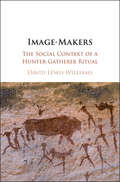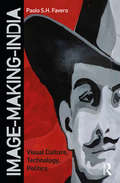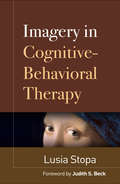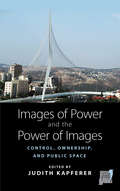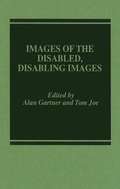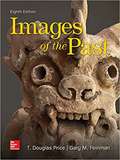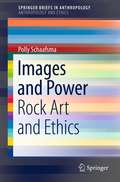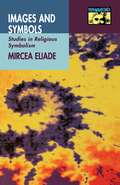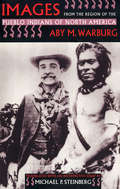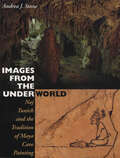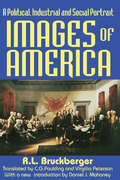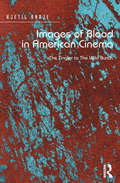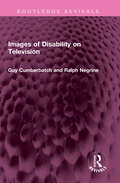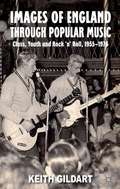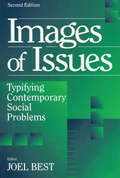- Table View
- List View
Image, Reality and Media Construction: A Frame Analysis of German Media Representations of China
by Fengmin YanThis book explores how news media construct social issues and events and thereby convey certain perceptions within the scope of framing theory. By operationalizing media framing as a process of interpretation through defining problem, diagnosing causes, making moral judgments and suggesting solutions, the book proposes a systematic and transparent approach to images in news discourse. Based on a frame analysis, it examines how German news media framed a list of China-related issues and events, and thereby conveyed particular beliefs and opinions on this country. Moreover, it investigates whether there were dominant patterns of interpretation and the extent to which diverse views were evident by comparing two major daily newspapers with opposite political orientations - the FAZ and the taz. Motivated by the relationship between image and reality, the book explores image formation and persistence from media construction of meaning and human cognitive complexity in perceiving others. Media select certain issues and events and then interpret them from particular perspectives. A variety of professional and non-professional factors behind news making may result in biased representations. In addition, from a social psychological perspective, inaccurate perceptions of foreign cultures may arise from categorical thinking, biased processing of stimulus information, intergroup conflicts of interest and in-group favoritism.Accordingly, whether media coverage deviates from reality is not the main concern of this book; instead, it emphasizes the underlying logics upon which the conclusions and judgments were drawn. It therefore contributes to a rational understanding of Western discourse and holds practical implications for both Chinese public diplomacy and a more constructive role of news media in promoting the understanding of others.
Image, Text, and Religious Reform in Fifteenth-Century England
by Shannon GaykFocusing on the period between the Wycliffite critique of images and Reformation iconoclasm, Shannon Gayk investigates the sometimes complementary and sometimes fraught relationship between vernacular devotional writing and the religious image. She examines how a set of fifteenth-century writers, including Lollard authors, John Lydgate, Thomas Hoccleve, John Capgrave, and Reginald Pecock, translated complex clerical debates about the pedagogical and spiritual efficacy of images and texts into vernacular settings and literary forms. These authors found vernacular discourse to be a powerful medium for explaining and reforming contemporary understandings of visual experience. In its survey of the function of literary images and imagination, the epistemology of vision, the semiotics of idols, and the authority of written texts, this study reveals a fifteenth century that was as much an age of religious and literary exploration, experimentation, and reform as it was an age of regulation.
Image-Based Sexual Abuse and Bystander Intervention: A Mixed Methods Study of Attitudes, Barriers and Facilitators (Palgrave Studies in Cybercrime and Cybersecurity)
by Asher Flynn Adrian J. Scott Elena CamaThe Pivot explores bystander intervention and image-based sexual abuse. It fills a critical gap in the market on a significant and contemporary legal, social, public health, and criminal justice issue. It is timely in light of a number of recent high-profile instances of image-based sexual abuse perpetration, including those involving the non-consensual digital altering and sharing of sexual imagery – sexualised “deepfakes” created with AI, digital tools or software – of celebrities (e.g. Taylor Swift) and young women. This book draws upon the first mixed methods study of its kind globally and makes a substantial contribution to the conceptualisation of image-based sexual abuse and bystander intervention; an issue that has not yet been explored in detail. Drawing on criminology, gender studies, psychology, and law, it provides new theoretical and practical insights of particular relevance to practitioners, stakeholders, and government and non-government organisations on how bystander intervention can be an untapped prevention resource.
Image-Makers: The Social Context of a Hunter-Gatherer Ritual (Codhill Press Ser.)
by David Lewis-WilliamsRock art images around the world are often difficult for us to decipher as modern viewers. Based on authentic records of the beliefs, rituals and daily life of the nineteenth-century San peoples, and of those who still inhabit the Kalahari Desert, this book adopts a new approach to hunter-gatherer rock art by placing the process of image-making within the social framework of production. Lewis-Williams shows how the San used this imagery not simply to record hunts and the animals that they saw, but rather to sustain the social network and status of those who made them. By drawing on such rich and complex records, the book reveals specific, repeated features of hunter-gatherer imagery and allows us insight into social relations as if through the eyes of the San themselves.
Image-Making-India: Visual Culture, Technology, Politics
by Paolo FaveroImage-Making-India explores the evolving meaning of images in a digital landscape from the vantage point of contemporary India. Building upon long-term ethnographic research among image-makers in Delhi, Mumbai and other Indian cities, the author interrogates the dialogue between visual culture, technology and changing notions of political participation. The book explores selected artistic experiences in documentary and fiction film, photography, contemporary art and digital curation that have in common a desire to engage with images as tools for social intervention. These experiences reveal images’ capacity not only to narrate and represent but also to perform, do and affect. Particular attention is devoted to the 'digital', a critical landscape that offers an opportunity to re-examine the significance of images and visual culture in a rapidly changing India. This volume will be of particular interest to scholars of visual and digital anthropology and cultures as well as South Asian studies.
Image-based Sexual Abuse: A Study on the Causes and Consequences of Non-consensual Nude or Sexual Imagery
by Asher Flynn Nicola Henry Anastasia Powell Kelly Johnson Clare McGlynn Adrian J. ScottThis book investigates the causes and consequences of image-based sexual abuse in a digital era. Image-based sexual abuse refers to the taking or sharing of nude or sexual photographs or videos of another person without their consent. It includes a diversity of behaviours beyond that of "revenge porn", such as the secret trading of nude or sexual images online; "upskirting", "downblousing" and other "creepshots"; blackmail or "sextortion" scams; the use of artificial intelligence to construct "deepfake" pornographic videos; threats to distribute photographs and videos without consent; and the taking or sharing of sexual assault imagery. This book investigates the pervasiveness and experiences of these harms, as well as the raft of legal and non-legal measures that have been introduced to better respond to and prevent image-based sexual abuse. The book draws on groundbreaking empirical research, including surveys in three countries with over 6,000 respondents and over 100 victim-survivor and stakeholder interviews. Guided by theoretical frameworks from gender studies, sociology, criminology, law and psychology, the authors argue that image-based sexual abuse is more commonly perpetrated by men than women, and that perpetration is higher among some groups, including younger and sexuality minority men. Although the motivations of perpetrators vary, a dominant theme to emerge was that of power and control. The gendered nature of the abuse means that it is best understood as a "continuum of sexual violence" because victim-survivors often experience it as part of a broader pattern of gendered harassment, violence and abuse. Written in a clear and direct style, this book will appeal to students and scholars of criminology, sociology, law and psychology. Image-based Sexual Abuse is also an essential resource for activists, legal and policy practitioners, technology companies and victim-survivors seeking to understand the deeply complex nature of intimate-image sharing in a digital era.
Imagery in Cognitive-Behavioral Therapy
by Lusia StopaRichly illustrated with clinical material, this book presents specific techniques for working with multisensory imagery in cognitive-behavioral therapy (CBT). Leading researcher-clinician Lusia Stopa explores how mental images--similarly to verbal cognitions--can trigger distress and drive maladaptive behavior. She guides the therapist to assess imagery and help clients to recognize and explore it. A range of interventions are described, including imaginal exposure, imaginal reliving, rescripting, working with self-images, and using positive imagery to improve well-being. Extensive sample dialogues and a chapter-length case example demonstrate the techniques in action with clients with a range of frequently encountered psychological problems.
Imagery-Based Cognitive Therapy for Bipolar Disorder and Mood Instability
by Kerry Young Emily A. Holmes Susie A. Hales Martina Di SimplicioPeople with bipolar disorder are particularly vulnerable to anxiety and intrusive mental imagery, which can contribute to mood swings and a heightened risk for relapse. This book presents a novel brief treatment that focuses on working with mental images to reduce distress and enhance mood stability. Grounded in cognitive-behavioral therapy (CBT), the book provides therapists with tested techniques for formulating individualized treatment targets, using metacognitive strategies to reduce the power of images, rescripting problematic images, and building adaptive positive images. User-friendly instructions for assessment and intervention include case examples, sample scripts, and troubleshooting tips. In a large-size format for easy photocopying, the book includes 19 reproducible handouts and session agendas. Purchasers get access to a Web page where they can download and print the reproducible materials.
Images Of Japanese Society Hb
by Yoshio Sugimoto Ross MouerThe popular image of Japanese society is a steroetypical one - that of a people characterised by a coherent set of thought and behaviour patterns, applying to all Japanese and transcending time. Ross Mouer and Yoshio Sugimoto found this image quite incongruous during their research for this book in Japan. They ask whether this steroetype of the Japanese is not only generated by foreigners but by the Japanese themselves. This is likely to be a controversial book as it does not contribute to the continuing mythologising of Japan and the Japanese. The book examines contemporary images of Japanese society by surveying an extensive sample of popular and academic literature on Japan. After tracing the development of "holistic" theories about the Japanese, commonly referred to as the "group model", attention is focused on the evaluation of that image. Empirical evidence contrary to this model is discussed and methodological lacunae are cited. A "sociology of Japanology" is also presented. In pursuit of other visions of Japanese society, the authors argue that certain aspects of Japanese behaviour can be explained by considering Japanese society as the exact inverse of the portayal provided by the group model. The authors also present a multi-dimensional model of social stratification, arguing that much of the variation in Japanese behaviour can be understood within the framework as having universal equivalence.
Images Of Power And The Power Of Images
by Judith KapfererReal places and events are constructed and used to symbolize abstract formulations of power and authority in politics, corporate practice, the arts, religion, and community. By analyzing the aesthetics of public space in contexts both mundane and remarkable, the contributors examine the social relationship between public and private activities that impart meaning to groups of people beyond their individual or local circumstances. From a range of perspectives--anthropological, sociological, and socio-cultural--the contributors discuss road-making in Peru, mass housing in Britain, an unsettling traveling exhibition, and an art fair in London; we explore the meaning of walls in Jerusalem, a Zen garden in Japan, and religious themes in Europe and India. Literally and figuratively, these situations influence the ways in which ordinary people interpret their everyday worlds. By deconstructing the taken for- granted definitions of social value (democracy, equality, individualism, fortune), the authors reveal the ideological role of imagery and imagination in a globalized political context.
Images Of The Disabled, Disabling Images
by Alan Gartner Tom JoeThe first book of its kind, Images of the Disabled/Disabling Images combines an examination of the presentation of persons with disabilities in literature, film, and the media with an analysis of the ways in which these images are expressed in public policy concerning the disabled. <P><P> Leaders of the disability rights movement and major scholars of disability issues explore both attitudes toward the disabled, as well as the ways in which the disabling images of these attitudes are incorporated in employment, health, housing, and education policies. <P><P>Discussions include the appeal of new technological aids and new developments in community living. The first book of its kind, Images of the Disabled/Disabling Images combines an examination of the presentation of persons with disabilities in literature, film, and the media with an analysis of the ways in which these images are expressed in public policy concerning the disabled. Leaders of the disability rights movement and major scholars of disability issues explore both attitudes toward the disabled, as well as the ways in which the disabling images of these attitudes are incorporated in employment, health, housing, and education policies. Discussions include the appeal of new technological aids and new developments in community living.
Images Of The Past
by T. Douglas PriceImages of the Past is an introduction to prehistoric archaeology that aims to capture the excitement and visual splendor of archaeology while at the same time providing insight into current research methods interpretations and theories in the field. The eighth edition offers a beautifully illustrated full-color site-by-site survey of prehistory and has been revised in accordance with both new discoveries in archeology and the interests of readers.
Images and Identities: Puerto Rican in Two World Contexts
by Asela Rodriguez LagunaFirst published in 1987. Routledge is an imprint of Taylor & Francis.
Images and Power
by Polly SchaafsmaEthics and Rock Art: Images and Power addresses the distinctive ways in which ethical considerations pertain to rock art research within the larger context of the archaeological ethical debate. Marks on stone, with their social and religious implications, give rise to distinctive ethical concerns within the scholarly enterprise as different perceptions between scholars and Native Americans are encountered in regard to worldviews, concepts of space, time, and in the interpretation of the imagery itself. This discourse addresses issues such as the conflicting paradigms of oral traditions and archaeological veracity, differing ideas about landscapes in which rock art occurs, the intrusion of "desired knowledge", and how the past may be robbed by changing interpretations and values on both sides. Case studies are presented in regard to shamanism and war-related imagery. Also addressed are issues surrounding questions of art, aesthetics, and appropriation of imagery by outsiders. Overall, this discourse attempts to clarify points of contention between Euro-American scholars and Native Americans so that we can better recognize the origins of differences and thus promote better mutual understanding in these endeavors.
Images and Symbols: Studies in Religious Symbolism
by Mircea EliadeMircea Eliade--one of the most renowned expositors of the psychology of religion, mythology, and magic--shows that myth and symbol constitute a mode of thought that not only came before that of discursive and logical reasoning, but is still an essential function of human consciousness. He describes and analyzes some of the most powerful and ubiquitous symbols that have ruled the mythological thinking of East and West in many times and at many levels of cultural development.
Images and Symbols: Studies in Religious Symbolism (Bollingen Series #684)
by Mircea EliadeMircea Eliade--one of the most renowned expositors of the psychology of religion, mythology, and magic--shows that myth and symbol constitute a mode of thought that not only came before that of discursive and logical reasoning, but is still an essential function of human consciousness. He describes and analyzes some of the most powerful and ubiquitous symbols that have ruled the mythological thinking of East and West in many times and at many levels of cultural development.
Images from Paradise: The Visual Communication of the European Union's Federalist Utopia
by Eszter SalgóDrawing upon the disciplines of politics, anthropology, psychoanalysis, aesthetics and cinema studies, Salgó presents a new way of looking at the "art of European unification." The official visual narratives of the European Union constitute the main object of inquiry – the iconography of the new series of euro banknotes and the videos through which the supranational elite seek to generate "collective effervescence," allow for a European carnival to take place, and prompt citizens to pledge allegiance to the sacred dogma of the "ever closer union," thereby strengthening the mythical sources of the organization's legitimacy. The author seeks to illustrate how and why the federalist utopia turned into a political soteriology after the outbreak of the 2008 crisis.
Images from the Region of the Pueblo Indians of North America
by Aby M. WarburgAby M. Warburg (1866–1929) is recognized not only as one of the century’s preeminent art and Renaissance historians but also as a founder of twentieth-century methods in iconology and cultural studies in general. Warburg’s 1923 lecture, first published in German in 1988 and now available in the first complete English translation, offers at once a window on his career, a formative statement of his cultural history of modernity, and a document in the ethnography of the American Southwest. This edition includes thirty-nine photographs, many of them originally presented as slides with the speech, and a rich interpretive essay by the translator.
Images from the Underworld: Naj Tunich and the Tradition of Maya Cave Painting
by Andrea J. StoneAn in-depth look at Maya cave painting from Preconquest times to the Colonial period, plus a complete visual catalog of the cave art of Naj Tunich.In 1979, a Kekchi Maya Indian accidentally discovered the entrance to Naj Tunich, a deep cave in the Maya Mountains of El Peten, Guatemala. One of the world&’s few deep caves that contain rock art, Naj Tunich features figural images and hieroglyphic inscriptions that have helped to revolutionize our understanding of ancient Maya art and ritual.In this book, Andrea Stone takes a comprehensive look at Maya cave painting from Preconquest times to the Colonial period. After surveying Mesoamerican cave and rock painting sites and discussing all twenty-five known painted caves in the Maya area, she focuses extensively on Naj Tunich. Her text analyzes the images and inscriptions, while photographs and line drawings provide a complete visual catalog of the cave art, some of which has been subsequently destroyed by vandals.This important new body of images and texts enlarges our understanding of the Maya view of sacred landscape and the role of caves in ritual. It will be important reading for all students of the Maya, as well as for others interested in cave art and in human relationships with the natural environment.&“Not only an extraordinarily detailed and insightful analysis of the painted representations and texts found in Naj Tunich but also a complete survey of all known Maya painted caves. . . . A major monograph on a major Maya site. For completeness of presentation, for clarity of writing, and for depth and scope of analysis, [Images from the Underworld] is a model of what a final report should be.&” —Journal of Anthropological Research
Images from the Underworld: Naj Tunich and the Tradition of Maya Cave Painting
by Andrea J. StoneAn in-depth look at Maya cave painting from Preconquest times to the Colonial period, plus a complete visual catalog of the cave art of Naj Tunich.In 1979, a Kekchi Maya Indian accidentally discovered the entrance to Naj Tunich, a deep cave in the Maya Mountains of El Peten, Guatemala. One of the world&’s few deep caves that contain rock art, Naj Tunich features figural images and hieroglyphic inscriptions that have helped to revolutionize our understanding of ancient Maya art and ritual.In this book, Andrea Stone takes a comprehensive look at Maya cave painting from Preconquest times to the Colonial period. After surveying Mesoamerican cave and rock painting sites and discussing all twenty-five known painted caves in the Maya area, she focuses extensively on Naj Tunich. Her text analyzes the images and inscriptions, while photographs and line drawings provide a complete visual catalog of the cave art, some of which has been subsequently destroyed by vandals.This important new body of images and texts enlarges our understanding of the Maya view of sacred landscape and the role of caves in ritual. It will be important reading for all students of the Maya, as well as for others interested in cave art and in human relationships with the natural environment.&“Not only an extraordinarily detailed and insightful analysis of the painted representations and texts found in Naj Tunich but also a complete survey of all known Maya painted caves. . . . A major monograph on a major Maya site. For completeness of presentation, for clarity of writing, and for depth and scope of analysis, [Images from the Underworld] is a model of what a final report should be.&” —Journal of Anthropological Research
Images of America: A Political, Industrial and Social Portrait
by R.L. Bruckberger"Either America is the hope of the world, or it is nothing. Th ere are those who have begun to despair of the West. It is for them that I am writing." Bruckberger's book has been compared by many to Tocqueville's Democracy in America. In both works, Americans see themselves through the sympathetic, sometimes critical eyes of a Frenchman. Bruckberger, as chaplain general of the French Resistance during World War II, was a scholar who lived a life of action, and a priest who knew the life of the spirit. He begins with a celebration of the American past, but also off ers a clear warning for the future.The book was written after Bruckberger's eight years in the United States, during which he thought deeply about the country, and came to love and admire it. He sees what others have not, and his heroes are, in most instances, not the ones normally chosen. As seen from the perspective of the old Europe, the ideas and ideals that have shaped the history and character of America, take on a new meaning. The result is an image of America that is as enlightening as it is surprising.Bruckberger believes America brings to the Western heritage an essential spark, one vital for the angry and perilous post-World War II world, and one equally important today. That is America's regard for the individual, for the non-abstract, living human being. This theme, contrasted with what Bruckberger sees as the heresy of Europe--the subordination of human beings to abstraction is developed with wit and insight.
Images of Blood in American Cinema: The Tingler to The Wild Bunch
by Kjetil RødjeThrough studying images of blood in film from the mid-1950s to the end of the 1960s, this path-breaking book explores how blood as an (audio)visual cinematic element went from predominately operating as a signifier, providing audiences with information about a film’s plot and characters, to increasingly operating in terms of affect, potentially evoking visceral and embodied responses in viewers. Using films such as The Return of Dracula, The Tingler, Blood Feast, Two Thousand Maniacs, Color Me Blood Red, Bonnie and Clyde, and The Wild Bunch, Rødje takes a novel approach to film history by following one (audio)visual element through an exploration that traverses established standards for film production and reception. This study does not heed distinctions regarding to genres (horror, western, gangster) or models of film production (exploitation, independent, studio productions) but rather maps the operations of cinematic images across marginal as well as more traditionally esteemed cinematic territories. The result is a book that rethinks and reassembles cinematic practices as well as aesthetics, and as such invites new ways to investigate how cinematic images enter relations with other images as well as with audiences.
Images of Disability on Television (Routledge Revivals)
by Guy Cumberbatch Ralph NegrineFirst published in 1992, Images of Disability on Television examines the frequency and nature of disability on British and American television and how it is perceived and presented by programme makers. Attitudes held by those closest to the issues – disabled people, their carers, and television producers and writers – are presented as the result of interviews and discussions. There is an increasingly strong sentiment that television has got it wrong as far as disability is concerned and does not play its proper role in allowing the non-disabled to understand fully the world of disabled people. This book provides information to promote greater understanding of the needs of the disabled people in television portrayal and opens up possibilities for a change in attitudes. It will be valuable reading for students, researchers and lecturers in the social sciences, communication studies, and media studies.
Images of England Through Popular Music: Class, Youth and Rock 'n' Roll, 1955-1976
by Keith GildartDrawing on archival sources and oral testimony, Keith Gildart examines the ways in which popular music played an important role in reflecting and shaping social identities and working-class cultures and - through a focus on rock 'n' roll, rhythm & blues, punk, mod subculture, and glam rock - created a sense of crisis in English society.
Images of Issues: Typifying Contemporary Social Problems (Social Problems And Social Issues Ser.)
by Joel BestConstructionist theory describes and analyzes social problems as emerging through the efforts of claimsmakers who bring issues to public attention. By typifying a problem and characterizing it as a particular sort, claimsmakers can shape policymaking and public response to the problem. Th is new edition of Images of Issues addresses claimsmaking in the 1990s, featuring such issues as fathers' rights, stalking, sexual abuse by the clergy, hate crimes, multicultural education, factory farming, and concluding with an expanded discussion of the theoretical debate over constructionism.
